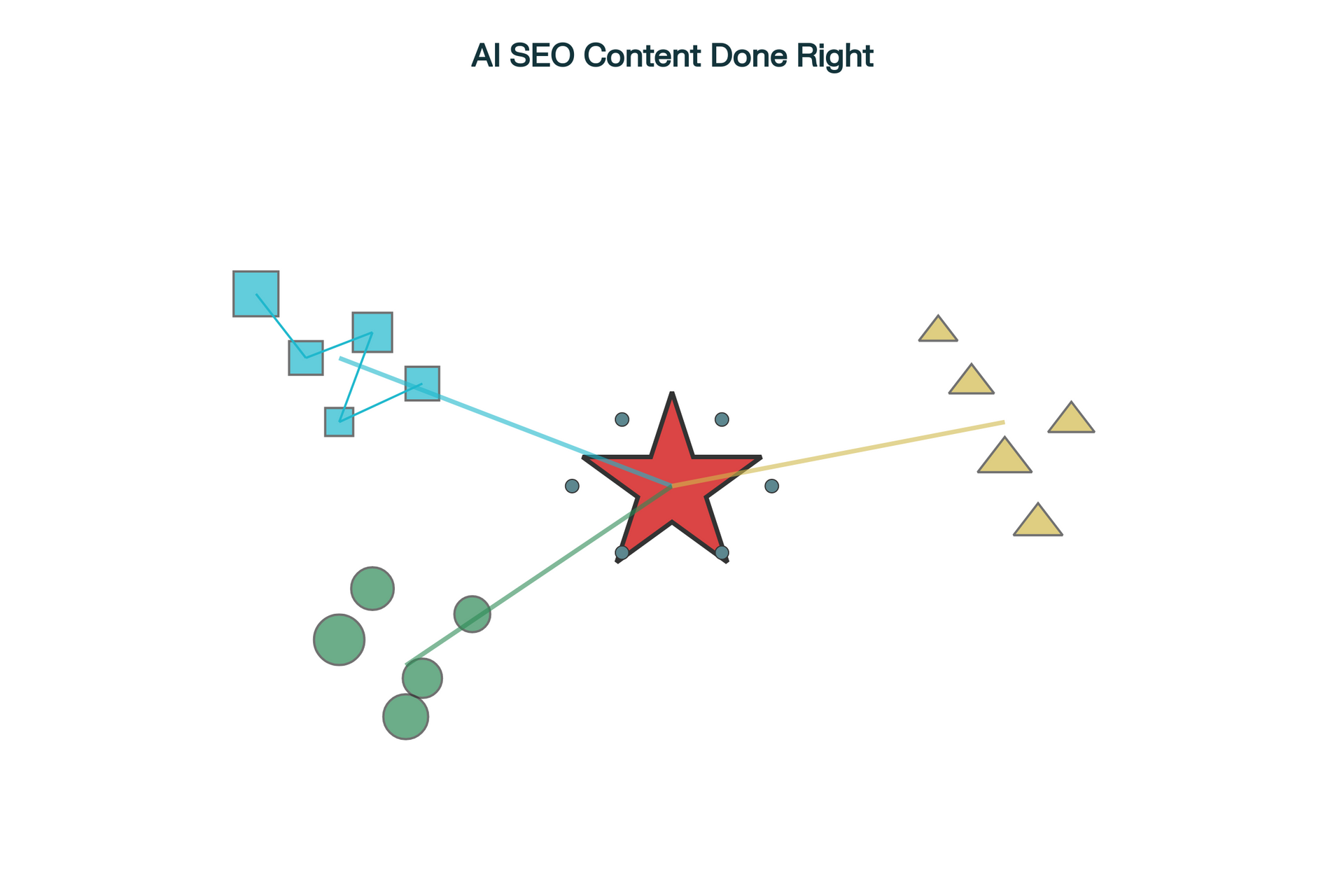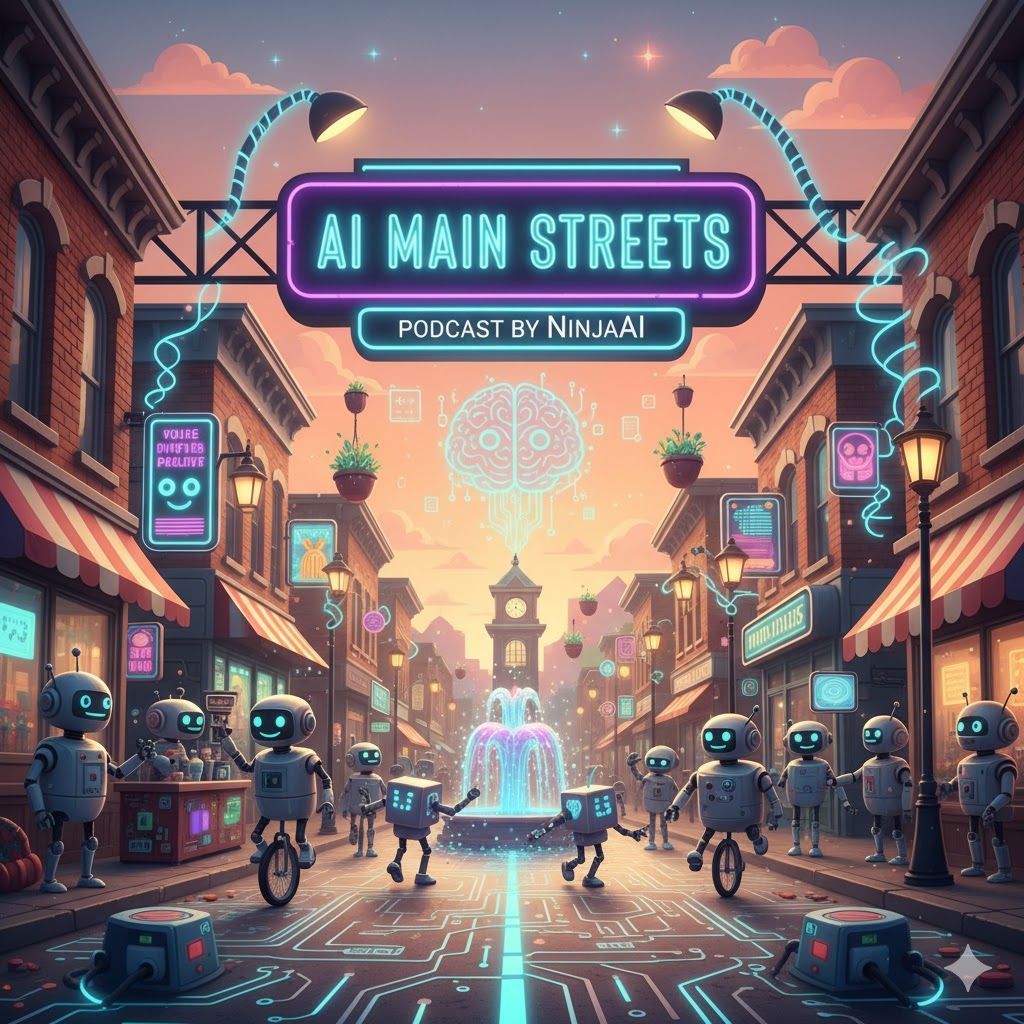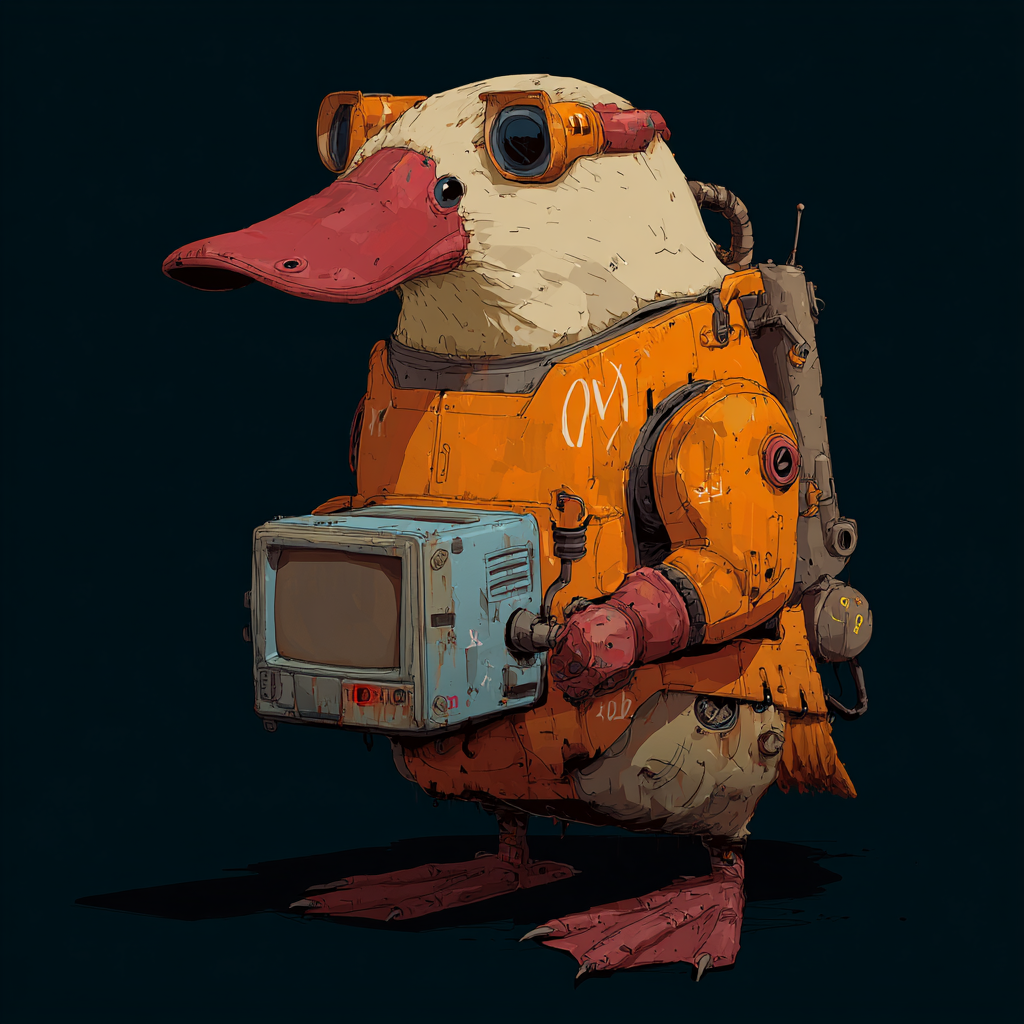AI-Generated Content and SEO: Why Quality Wins, Not the Origin (2025 Edition)
By Jason Wade, Founder NinjaAI and AiMainStreets • November 15, 2025

TLDR:
AI-generated content can absolutely rank on Google and fuel your SEO strategy—if you use it wisely. Google doesn’t care HOW content is made, it cares about value. Combine AI’s speed with your expertise, insight, and editorial effort to win. Publish helpful, original, well-edited content and focus on E-E-A-T (Experience, Expertise, Authoritativeness, Trustworthiness). Don’t rely on generic AI outputs or churn and burn. Human+AI hybrid wins in 2025.
Table of Contents:
Introduction: The AI Content Hype
Google’s Real Stance on AI Content
E-E-A-T: The Gold Standard for Ranking
Myth-Busting: What Actually Hurts SEO
Best Practices for AI-Generated SEO Content
How to Scale Quality and Uniqueness with AI
Editorial Workflows: The Human+AI Advantage
Common Pitfalls and How to Avoid Them
FAQ: Twenty Questions Answered
Final Thoughts and Actionable Steps
1. Introduction: The AI Content Hype
2025 is the era of generative AI content. Nearly every business, agency, and solo creator is using some flavor of ChatGPT, Claude, Gemini, or custom LLM for blog content, web pages, and SEO at scale. Headlines warn: “AI-generated content may hurt your SEO!”
But the truth, stripped of hype, is simple: Bad content hurts SEO. Good content wins—no matter how it’s made.
AI isn’t the enemy—it’s a tool. How you use it determines your success.
2. Google’s Real Stance on AI Content
Since 2023, Google has clarified its guidelines on AI and automated content. The official word:
“Using AI or automation for content is not against our guidelines. What matters is the quality, usefulness, and originality—not the tools used.”
Spam policy focuses on scaled content abuse—low-quality, unoriginal mass content that’s intended only to manipulate rankings.
But if AI helps you build deep, authoritative, people-first content? Google welcomes it.
3. E-E-A-T: The Gold Standard for Ranking
Whether you’re writing about plumbing, legal services, or advanced AI—E-E-A-T is the core ranking framework:
Experience: First-hand knowledge, stories, and case studies.
Expertise: Subject-matter depth, references, and unique insight.
Authoritativeness: Citations, backlinks, and media recognition.
Trustworthiness: Accuracy, editorial review, privacy, transparency.
AI can help you draft and research, but ultimately, humans need to layer on E-E-A-T for true authority and rankings.
4. Myth-Busting: What Actually Hurts SEO
What really sinks your rankings?
Publishing generic, thin, or duplicate content (source doesn’t matter—AI or human).
Content that doesn’t match user intent or lacks topical depth.
No editorial review or fact-checking (hallucinated facts).
Mass automation without uniqueness, brand voice, or real expertise.
AI content is not penalized by default—only poor, unhelpful content is.
5. Best Practices for AI-Generated SEO Content
Here’s how to leverage AI for SEO without risk:
Start with a Clear Topic and Strategy: Know your keywords, audience, and intent.
Use AI as a Drafting Tool: Outline, brainstorm, and fill gaps faster.
Edit for Voice and Depth: Add brand stories, commentary, and real-world examples.
Fact-Check Rigorously: Ensure accuracy, cite sources, and fix hallucinations.
Optimize On-Page for SEO: Structure content with headings, schema, meta tags, and internal linking.
Add Visuals and FAQs: Support readability and generative search summaries.
Regular Auditing: Test content against competitors, update old posts, and measure rankings.
Pair With Human Review: Always add final editorial polish—AI is your assistant, not your final author.
6. How to Scale Quality and Uniqueness with AI
Mass production can risk duplication, but here’s how you scale uniqueness:
Use layered prompts with exclusive datasets, local details, and custom brand info.
Have AI generate outlines, then fill in each section with your own expertise or unique research.
Vary structure, POV, and CTAs in each post.
Use schema, LSI keywords, and semantic optimization for greater relevance.
7. Editorial Workflows: The Human+AI Advantage
Step 1: Research keywords and competitors
Step 2: Use AI to draft outlines, talking points, and sample intros.
Step 3: Human editing for voice, facts, and insight.
Step 4: Content optimization (SEO metadata, schema, linking).
Step 5: Publish and distribute across web, podcast, and social.
Step 6: Review performance and update content based on analytics.
This workflow is both faster and higher quality than pure manual or pure AI.
8. Common Pitfalls and How to Avoid Them
Blind Copy-Paste: Always edit.
No Fact-Checking: Use authoritative citations.
Overly Generic Output: Customize prompts and add SME input.
Ignoring User Intent: Solve real problems, answer actual questions.
Skipping Audits: Regularly refresh and optimize!
9. FAQ: Twenty Essential Questions About AI + SEO Content
Will Google penalize AI content?
No—only if it’s spammy, low-value, or unhelpful. Quality is what matters.
What is E-E-A-T and why does it matter?
It stands for Experience, Expertise, Authoritativeness, Trustworthiness—the key to ranking.
How do I make AI-generated content unique?
Add original insights, local info, brand POV, and layer prompts.
Is SEO with AI just keyword stuffing?
No. SEO in 2025 is about matching user intent, not just keywords.
Should I reveal that AI helped write my content?
Transparency is good, but not required unless legally necessary.
How often should I update my AI-generated posts?
Refresh every few months for accuracy and relevance.
Can AI create long-form pillar pages (2500+ words)?
Yes—but human editing is essential for depth and nuance.
Does AI help with technical SEO?
Yes—with tools for audits, schema, and site structure.
Should I use AI for local SEO?
Absolutely! Customize with local data and details for better GEO/AEO results.
How does AI help with FAQ and snippet optimization?
AI drafts Q&A sections that improve featured snippet chances.
What about voice search and visual SEO?
AI can help format for voice and visual searches, but human tuning is needed.
Can AI improve backlink building?
AI pinpoints outreach targets and content gaps for better link strategies.
How do I deal with hallucinations?
Fact-check, reference trusted sources, and edit all AI output.
Is schema markup necessary for AI SEO?
Strongly recommended—improves visibility and helps engines “understand” content.
Do podcasts and multimedia help SEO in 2025?
Definitely. AI assists with show notes, transcripts, and distribution.
What’s the best workflow for AI-powered SEO?
Draft with AI, then audit, edit, optimize, and measure—human+machine is optimal.
Is there a risk of duplicate content with AI?
Yes if you use mass-market AI templates—customizing inputs minimizes risk.
How can I use AI for competitor research?
AI tools analyze competitor sites, keywords, and link profiles quickly.
Will AI change again next year?
Certainly—keep learning, auditing, and refining your approach.
What single tip matters most for AI+SEO success?
Don’t publish without human review; always layer value, insight, and audit.
10. Final Thoughts and Actionable Steps
AI-driven SEO is now mainstream—but the old SEO truths remain. Put the user first, deliver real value, and use technology as a servant—not a substitute—for expertise.
If you build hybrid workflows, edit for E-E-A-T, and invest in ongoing audit, your AI-generated content will outperform competitors (and myth-makers) in 2025.
Action Steps:
Plan strategy, then use AI for scale and quality.
Always edit, optimize, and audit as your competitive edge.
Update content regularly—AI and human together.
Use schema, multimedia, and keyword gap analysis.
Track, measure, and improve—don’t get complacent!
Jason Wade — AI Visibility Architect & Founder of NinjaAiOS
Jason Wade is the architect behind NinjaAiOS, a multi-layered AI visibility operating system built to redefine how small and mid-sized businesses are discovered in the AI era. He doesn’t build websites, agencies, or campaigns — he builds visibility infrastructure: content engines, GEO/AEO discovery frameworks, automated audits, local knowledge systems, dashboards, and certification layers that didn’t exist before he created them.
In a landscape where most agencies still sell tactics, Jason is building the category itself. He’s the founder of AI Visibility for Main Street, designing the discovery architecture that future businesses will depend on to appear inside ChatGPT, Perplexity, Gemini, Apple Intelligence, and every emerging AI search surface.
NinjaAiOS is the culmination of his approach — an orchestrated system that blends generative content automation, entity optimization, AI-driven mapping, dynamic dashboards, and real-time visibility intelligence into one unified platform. Instead of chasing algorithms, Jason builds the structures that algorithms reward.
Over seven months, he’s advanced from traditional SEO into a genuine new discipline: architecting end-to-end AI discovery systems that compress years of strategy into hours of automated output. His work fuses technical engineering instincts with small-town entrepreneurial grit, giving local businesses access to the kind of machine-intelligence frameworks previously reserved for global brands.
Jason’s mission is simple and ambitious:
Rebuild Main Street’s competitive edge using AI-powered discovery architecture that changes how America finds local businesses.
His OS.
His category.
His movement.
And he’s just getting started.
More: https://jason-wade-0qhw5qv.gamma.site
Insights to fuel your business
Sign up to get industry insights, trends, and more in your inbox.
Contact Us
We will get back to you as soon as possible.
Please try again later.
SHARE THIS






















